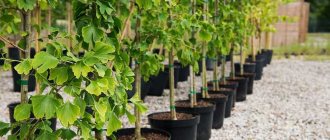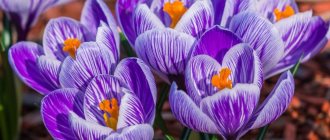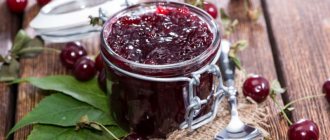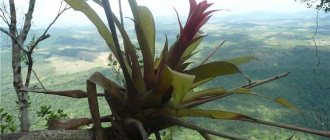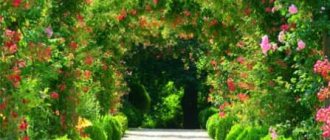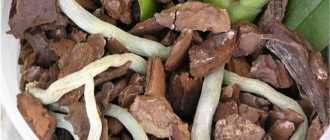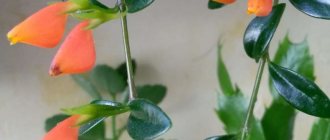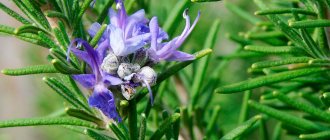Royal scepter mullein, which is easy to grow, has a large number of useful properties. In addition to the medicinal effect, the composition of verbascum in combination with salvia will become a real decoration of the flowerbed.
Following the rules regarding caring for mullein will allow you to grow healthy plants that will delight you with lush flowering all summer long.
Description and characteristics
Mullein is an amazing garden plant that delights with gorgeous flowering throughout the summer. Charming flowers located on tall peduncles do not last long, but the alternate opening of the buds promotes continuous flowering. The plant is popularly called as golden flower, archer, royal scepter, verbascum. Despite its simplicity, the flower will fit into any garden design.
Mullein belongs to the category of biennial plants, growing up to 200 cm in height. The outlines of the culture are similar to the scepter. Small yellow flowers, the diameter of which barely reaches 1.5 cm, are densely located on the upper parts of the stems. Alternate blooming of flowers begins from the middle region of the stems. You can admire the blooms throughout the summer.
Verbascum foliage is located horizontally above the ground surface. The leaf blades are quite wide. The two-year-old crop has a powerful root system.
Often, mullein can be found on the side of the road, in the yard, in fields and forest areas. People often use the plant for medicinal purposes.
When does verbascum bloom?
Flowering, or the burning of such a small “candle” occurs from June to August, that is, it lasts almost the entire season. During this period, the stem is covered almost half of its top with rows of buds, which alternately bloom for one day and fade in the evening. The next day, new buds bloom, and so a long continuous flowering is formed. The flowers are relatively small for such an impressive plant, the colors of the petals are white, violet, yellow, purple, lilac and pink.
When the ataman grass completely fades, its stem dies, but the main greenery still remains fresh for some time.
Kinds
There are more than 240 varieties of mullein, but in our country you can find only 6-8 varieties of the plant. These species can adapt perfectly to our climate. Below are the types of verbascum found in our latitudes.
- Scepter-shaped (dense-flowered) mullein. The height of the decorative crop reaches 20-110 cm. Thick, erect stems are densely covered with leaf blades. The oval-shaped lower foliage reaches 15-35 cm in length. The upper leaf blades are much smaller. Their length does not exceed 10 cm. Long spike-shaped inflorescences are dotted with bunches of flowers, painted in a yellow palette. The inflorescences resemble a golden royal scepter. Each of the corollas reaches 5 cm in width. Fresh flowers have an amazing subtle aroma. Dried inflorescences have a pronounced honey smell.
- Common mullein (bear's ear). Any part of the culture is densely pubescent with long silvery fibers. The foliage is dark green. Leaf blades are concentrated along the entire length of the shoots. At the very top of the shoot there is a short inflorescence shaped like a spikelet. The length of the lower petiole foliage reaches 16-30 cm. The size of the green mass in the upper part of the stem is much smaller. From a distance, the foliage shrinking upward resembles the outline of a cone. A large number of small flowers form an inflorescence. The diameter of small flowers barely reaches 1.5-2 cm.
- Black mullein, whose height reaches 55-115 cm, is distinguished by erect stems. Large leaves are concentrated below in the third part of the shoot. The lower petiolate foliage is ovoid or heart-shaped. The length of the leaf plates reaches 20 cm. Long inflorescences are covered with bunches of small yellow flowers. Near the base of the petals, the presence of brown spots can be noted. Purple fibers decorate the columns of stamens.
- Medicinal mullein. Each of the stems, the height of which can exceed 120-140 cm, is densely covered with leaf blades. Long inflorescences located in the upper region of the stems branch into several shoots. Each part of the perennial is covered with thick felt fibers. The length of the oval leaves exceeds 15-20 cm. The flower petals are long and soft to the touch. Flowers are collected in groups along the entire length of the inflorescences. The anthers are painted in bright red tones.
- Hybrid mullein is a decorative species that breeders obtained through interspecific crossing. Large flowers are painted in various shades. The height of the shoots, depending on the variety, can reach 50-170 cm. Among the best hybrid species of verbascum, it is worth highlighting Mont Blanc, Pink Domino, Jackie and Herry Helen.
Chemical composition
Active ingredients
The corollas of mullein contain up to 2.5% mucus, about 11% sugar (including 3.5% glucose), 11-12% other carbohydrates, triterpene glycosides (saponins), flavonoids, traces of essential oil, gum, coumarin, R -carotene, coloring agent st-crocetin. The flavonoid diosmin was isolated from the leaves, and carbohydrates (stachyose, verbascose and sucrose galactosides) were isolated from the roots. Leaves and flowers - ascorbic acid. All parts of the plant contain the iridoid glycoside aucubin.
Growing from seeds at home
The plant does not belong to the category of capricious ones. Abundant flowering throughout the summer is a definite advantage. The presence of a taproot system allows mullein to obtain moisture from the depths. The presence of pubescence on the leaf blades reduces moisture evaporation. The plant can grow both in a sunny area and in a shaded area.
When choosing a place for planting, it is worth considering that verbascum will not delight with lush flowering on loamy soil. In order to propagate a crop, you need to use seeds. Small seeds are sown in open ground at the end of spring, when the threat of night frosts has passed. The seeds are distributed over the bed and lightly sprinkled with a small layer of soil. After the emergence of seedlings, it is necessary to thin them out, leaving only strong and healthy specimens. The distance between plants should reach 20-25 cm.
Seedlings need abundant, systematic soil moisture. A year after planting, the plants will begin to bloom. When replanting a biennial tree, it is important not to separate the lump of soil from the root system, which will allow the plant to quickly adapt to the new location. The perennial reproduces well by self-sowing.
Note! From seed collected from one plant, descendants with different flower colors grow.
When watering, it is worth considering that verbascum does not like waterlogged soil. Therefore, water is added under the mullein gradually as it is absorbed into the soil. To extend the life of the biennial, cut the stems as soon as the flowers begin to dry out. There is no need to wait until the fruits begin to ripen. Frequent application of fertilizers to fertile soil shortens the lifespan of flowers.
Features of care
In order for the plant to bloom for a long time, it is necessary to follow the recommendations of experienced agronomists regarding the care of biennials. Below are the main features of care.
- Feeding. Before sowing verbascum seeds, it is necessary to add a small percentage of mineral fertilizer to the soil. After applying fertilizer, it is recommended to loosen the soil. For adult mullein, organic and mineral fertilizer is suitable as a top dressing. Fertilizing is applied to the root zone area.
- Weeding is a necessary item for caring for mullein. The medicinal plant needs systematic loosening of the soil. Weeds take away useful elements and soil and create additional shading, which negatively affects the development of young seedlings.
- Mulching will have a positive effect on the appearance of mullein. By sprinkling the soil with sawdust, you can get rid of weeds, saturate the soil with useful elements, and maintain soil moisture for a long time. Verbascum is fragrant in such conditions.
- Removal of flowers is carried out in stages as they wither. This process allows you to slow down the flowering process of the remaining buds and prevent the strength from being drawn out of the plant. After the crop has flowered, the stems are also cut, dried and used as mulch.
- Preparing mullein for winter. It is necessary to prepare plants for cold weather in October. The biennial root system is sprinkled with a layer of sawdust, peat, ash and fallen leaves. The bedding layer should reach 7-10 cm.
Reproduction
For the purpose of propagation, the seed method or the method of dividing the bush can be used. Seed material remains viable for a long time. The seeds can be sown immediately in open ground, as mullein is resistant to frost. In fields, biennials reproduce by self-sowing. The first shoots appear after 10 days. The first months the seedlings grow slowly. With proper care, the growth rate increases from 9-10 weeks.
To preserve varietal characteristics, it is necessary to use the method of dividing the bush. The process is performed in September, when flowering has come to an end. The plant along with the root is dug up and shaken off the earthen clod. The root is cut into 2-3 parts, so that buds remain on each of them. The length of each root should be within 5-6 cm. Each division is placed in separate holes. A small layer of sand is poured over the root with the bud. Only after this can the hole be filled with soil. The distance between the holes should not be less than 35 cm.
Diseases and pests
Mullein is most often harmed by aphids and fungal infections. In order to cope with the pest, you should use drugs of the following type:
- Aktars;
- Anti-mite Max;
- Decisa;
- Inta-Vira;
- Golden spark;
- Calypso Spray;
- Fitoverma;
- Tanreka;
- Tsvetoluxa.
It is very important to accurately follow the dosage of medications. As soon as signs of aphids are detected on the plant, treatment should begin as soon as possible.
Note! When spraying flowers, it is unacceptable to get the solution on edible plants growing nearby, since harvesting in this case will need to be postponed for a month.
If a fungal infection is detected on flowers, the plantings should be sprayed with Fitosporin-M or Topaz as soon as possible. Fungicidal agents will help quickly cope with the disease.
Preparation of medicinal raw materials
It is very important to follow the rules for collecting and drying medicinal raw materials. If during storage the yellow tint of the flowers changes to gray-brown, most of the beneficial properties of mullein can be considered lost. Flowers are collected in the morning, at 8-9 o'clock, when the sun has not yet reached full strength, but has already dried the dew. Neither rainy nor cloudy weather is suitable for collecting raw materials. Even yesterday's rain can cause excess moisture, which will lead to rotting.
Drying is done in a well-ventilated place, after which the product is stored in a glass container with a ground-in lid. Paper and fabric are not suitable for this, since dried raw materials tend to absorb moisture from the air and deteriorate. Only the corollas and stamens of flowers are collected, leaving the calyxes, because they degrade the quality of collection.
It should be borne in mind that the yield of the finished medicinal product is very low, no more than 10% of the weight of the collected material.
Medicinal properties of the plant
Mullein has medicinal properties, so it is used quite often during therapy:
- skin pathologies;
- gastrointestinal infections;
- hemorrhoids;
- pathologies of the oral cavity;
- asthma and sore throats;
- cardiovascular diseases.
The royal scepter affects the human body as an effective sedative, expectorant, and diuretic. Very often, pharmaceutical companies include the plant in their preparations.
In folk medicine, tinctures, decoctions, oils and ointments made on the basis of verbascum are actively used. It is worth considering that during the preparation of decoctions and infusions, the stamens of the plant are first removed, which avoids irritation of the skin and mucous membrane.
Contraindications
Despite the beneficial properties of the plant, it should be used very carefully by women carrying a child. During lactation, mullein should not be used.
There are cases when the royal scepter provokes the development of an allergic reaction. Therefore, before starting use, it is important to test the composition in a small amount on the skin. If there are no unpleasant sensations or redness after 100-120 minutes, you can safely use the folk remedy.
Mullein grass for hemorrhoids: healing properties and the best folk recipes, reviews
There are a large number of varieties of mullein, but in folk medicine the royal scepter is most often used. The flowers of the plant have healing properties, which are dried and then used for many diseases.
The royal scepter consists of:
- flavonoids;
- tannins;
- essential oils;
- gum;
- coumarins;
- carotene;
- saponins;
- iridoids;
- organic acids;
- vitamin C;
- alkaloids.
Mullein also contains tannins.
Useful properties of the royal scepter
Royal scepter mullein is used in the treatment of various diseases. This is explained by the healing properties of the plant, which include:
- getting rid of unpleasant sensations;
- elimination of inflammatory processes;
- treatment of wounds that do not heal well;
- treatment of bruises.
Due to its composition, the royal scepter is used in the fight against:
- cough;
- bronchial asthma;
- jaundice;
- atherosclerosis;
- stomatitis;
- periodontal disease;
- problems with the gastrointestinal tract system.
The plant is often used to combat psoriasis, eczema, and dystrophy. The use of mullein is practiced for cystitis and nervous system disorders. Oil prepared from the flowers of the royal scepter fights tuberculosis, cleanses the airways, restores the voice and respiratory system.
Although mullein is characterized by a whole range of beneficial properties, before using it to treat any disease, prior consultation with a qualified specialist is necessary.
The herb mullein for hemorrhoids is used due to its healing properties. The royal scepter provides hemostatic, anti-inflammatory, bactericidal, enveloping and analgesic effects. Thanks to the beneficial effects, it will be possible to treat hemorrhoids even at the acute stage in order to reduce discomfort and stop the inflammatory process.
Scepter-shaped mullein helps in the recovery of the patient because:
- relieves swelling;
- helps soften hemorrhoids;
- reduces the size of hemorrhoids;
- effectively heals cracks in the rectum, microtraumas;
- fights infections.
Reviews from patients who have practiced treating hemorrhoids with mullein indicate that after using products based on this plant, you can easily defecate without pain.
To achieve positive dynamics, the herb should be used in parallel with traditional therapy and only after the approval of the attending physician.
- The most popular folk remedies for hemorrhoids, which can be used at home, are described in detail in the article by our expert.
- A detailed review of the medicinal properties of herbs for hemorrhoids and methods of their use are presented in the material of a proctologist.
There are a large number of remedies based on the royal scepter that help with hemorrhoids. Based on the flowers of the plant, you can prepare decoctions for oral administration, which is especially important for internal hemorrhoids. For a local effect on the disease, baths, compresses, suppositories are used, and an oil extract is prepared.
When preparing products, you must follow the proportions indicated in the recipes so as not to harm the body.
Preparations for internal use
You can treat hemorrhoids with herbs using oral medications. Common infusion recipe:
- 1 tbsp. l. dried flowers of the royal scepter are poured with 250 ml of boiling water;
- the drug is infused in a thermos for 60 minutes;
- filter the drink through cheesecloth;
- take 1/3 cup orally after meals.
You can prepare the decoction according to a different recipe. You should take 4 tsp. dried flowers, pour them into an enamel bowl, pour in 0.5 liters of water, tightly close the container with a lid and place on low heat. The composition needs to be brought to a boil, boiled for another 5 minutes, and then removed from the stove. Then the medicine must be kept in a closed container for an hour.
It is recommended to consume the finished decoction 100-120 ml 2-3 times a day. The course of therapy is 14-21 days.
Decoctions should not be consumed by people who have allergic reactions to mullein, as well as by pregnant and lactating women.
Another recipe that helps to cope with hemorrhoids was known by old healers and they used it successfully. To prepare the infusion, you need to take fresh flowers of the plant, pour them with moonshine in a ratio of 1:2 and leave for 20 days. After the specified time, you should use the infusion 1 tsp. per day.
But before such treatment, you must consult a doctor, since there are many contraindications to the use of the drug.
Using baths
Treatment of hemorrhoids with mullein is carried out using special baths. To prepare them, you need to take the flowers and roots of the royal scepter in a 1:1 ratio.
The resulting composition is poured into 6 liters of cold water, placed on low heat and boiled. When the broth has cooled, you need to pour it into a basin and then sit in the container. The duration of the procedure is 10-15 minutes.
Therapy must be continued until the symptoms of the disease disappear.
Another version of the bath is also often made:
- take 2 tsp. dried mullein flowers, pour 250 ml of boiled water;
- infuse the drug for 60 minutes;
- then filter 2 times so that small fibers do not get into the solution;
- the resulting liquid is added to the basin, then water is poured in.
The duration of a sitz bath is up to 30 minutes. The baths are done for 12-15 days.
Using candles
You can treat hemorrhoids with mullein by making rectal suppositories from the plant. To create candles, take in equal proportions:
- buds of the royal scepter;
- white chamomile inflorescences;
- toadflax flowers.
Then 3 tbsp. l. The resulting collection is mixed with 100 g of butter (necessarily softened). The mass is heated in a steam bath for 60 minutes, stirring regularly. After this, the container with the mixture is covered with a warm cloth and left until it cools completely. Then it is reheated and carefully filtered.
When the mass cools and hardens, cone-shaped suppositories are made from it, which are then placed in the rectum. This must be done at night. To achieve the best effect, the suppository must be administered after a cleansing enema. It is recommended to store prepared suppositories in the refrigerator.
Preparation of oil extract
An oil extract is prepared for the treatment of hemorrhoids. The recipe is simple:
- 3-4 tbsp. l. plant flowers (can be fresh or dry) are poured with olive or sea buckthorn oil (120 g);
- the resulting mass is placed in a warm room or on a windowsill in a glass container (preferably in a jar) and left for a month;
- Every day you need to shake the vessel once a day.
After the specified time, the resulting oil should be used to treat inflamed hemorrhoids. The extract is generously applied to a bandage or cotton pad, and then applied to problem areas. It is recommended to carry out this procedure up to 5 times a day.
Other remedies from the royal scepter
To treat inflamed hemorrhoids, other mullein-based remedies are also used.
- Compress. 3 tbsp. l. The medicinal plant needs to be filled with 1 liter of warm water and placed in a water bath. After 10-12 minutes, you need to remove the product, soak gauze, bandage or cotton pad with it and apply it to the hemorrhoids. It is recommended to keep the application until the liquid has completely dried. You can apply 2-3 such compresses per day. Therapy is continued until complete recovery.
- Ointment. For preparation, the seeds of the plant are used, they are ground to a powder-like mass and mixed with butter in a ratio of 1:2. The resulting product is used to treat inflamed cones. The use of such an ointment is especially important for hemorrhoids, which are accompanied by bleeding.
- Enemas. Used for internal forms of the disease. Take 30 g of scepter-shaped mullein, add 1 liter of water and place in a steam bath. Then take a syringe, fill it with 40 ml of solution and carefully insert it into the rectum. After the procedure, you should lie down for 15-20 minutes. The result of use will be noticeable immediately after the first session.
You can prepare mullein for preparing remedies yourself (it grows in Yekaterinburg and other cities and villages of Russia) or buy dried flowers at a pharmacy.
List of contraindications
Before using mullein, you should make sure there are no contraindications.
Plant-based products should not be used by people who have reduced blood clotting or allergic reactions to the plant.
Patients who are about to undergo surgery to remove hemorrhoids should not use preparations from scepter mullein. Pregnancy and breastfeeding are considered a serious contraindication.
When preparing mullein-based products for internal use, you should carefully strain them so that small petals and stems do not get on the mucous membrane of the pharynx and esophagus.
In case of an overdose of drugs based on this medicinal culture, your health may worsen and constipation may occur. Therefore, before deciding to take such drugs, you should consult your doctor.
Why is consulting a doctor important?
Inflammation of hemorrhoids is a serious disease that requires careful complex therapy. In some cases, even surgical intervention may be necessary. Therefore, if you suspect hemorrhoids, you should immediately contact a specialist without delaying the visit. The proctologist will diagnose the disease, determine the stage of hemorrhoids, and recommend suitable medications.
Pregnant women should be especially careful, because they should not use most medications so as not to harm the health of the unborn child. Only an experienced doctor will be able to select the optimal therapy.
You can learn about what modern methods of treating hemorrhoids traditional medicine offers by reading the article by our expert.
Conclusion
No matter how effective mullein is for hemorrhoids, you should approach therapy with this plant with caution. Although products based on medicinal cultures have healing and anti-inflammatory effects, their use must be agreed upon with the attending physician.
Source: https://zhkt.info/gemorroy/narod-gemor/lechenie-gemorroya-korovyakom
Application in landscape design
Blooming spikelets of an ornamental crop attract the attention of even the most experienced gardener. Landscape designers use mullein for planting in small groups on the lawn. Verbascum is also actively used in decorating flower beds where bulbous perennials are planted. Mullein goes perfectly with salvia, anafalis, stachys, catnip, and orchis.
Luchinnik is an effective medicinal plant that not only benefits the human body, but also decorates the design of the local area. An unpretentious culture that can become a decoration for any flower bed.
Watch a video about these beautiful flowers:
The beneficial effects of mullein decoction on the body
Internal use of mullein in the form of a tincture or decoction can give a strong diuretic effect. This plant is also used for infectious diseases of fungal origin, since its components adversely affect the microbial microflora. The version about the vasoconstrictor properties of mullein has not yet been fully confirmed by researchers. However, this does not in any way prevent the plant from being used to treat peptic ulcers of the gastrointestinal tract. Mullein has an enveloping effect on the mucous membrane of the organ and has a wound-healing effect. Of course, it is hardly possible to heal an ulcer using herbal composition alone, but in combination with conservative methods of traditional treatment, the dynamics of recovery can be accelerated.
Are there any contraindications for mullein?
Despite the fact that the herb itself is not dangerous, there are still some precautions for its use. In particular, before preparing medicines from mullein, it is important to remove all parts of the plant: stamens, petals, leaves, villi, etc.
Before drinking, it is necessary to strain the drink - this will prevent the accumulation of toxic substances and irritation of the mucous membrane of internal organs. Mullein products prepared according to folk recipes should be stored away from food. Pregnant women should also take Mullein scepter flower with caution. A contraindication to its use is individual intolerance.
Common mullein (verbascum, bear's ear) is a biennial plant of the Norica family, reaching up to three meters in height. It blooms in the second year of growth in July-August with medium-sized yellow flowers collected in spikelet inflorescences. Prefers sandy soils, found near roads, in forests, on sandy soils. Mullein is also grown as an ornamental plant in gardens and parks. There are several varieties of mullein: paniculate, scepter-shaped, etc.
Treatment of blood vessels with bear's ear grass
Traditional healers are confident that mullein can be used to treat hypertension and atherosclerosis. Allegedly, the herb helps to dilate blood vessels, making their walls more elastic and stronger.
There is no official confirmation of this property of mullein yet, but followers of this version are confident that blood pressure can be lowered by using the tops of the plant brewed in boiling water. The course of treatment for hypertension and atherosclerosis is 30 days. For prevention, the decoction is taken every 3 months for two weeks.

